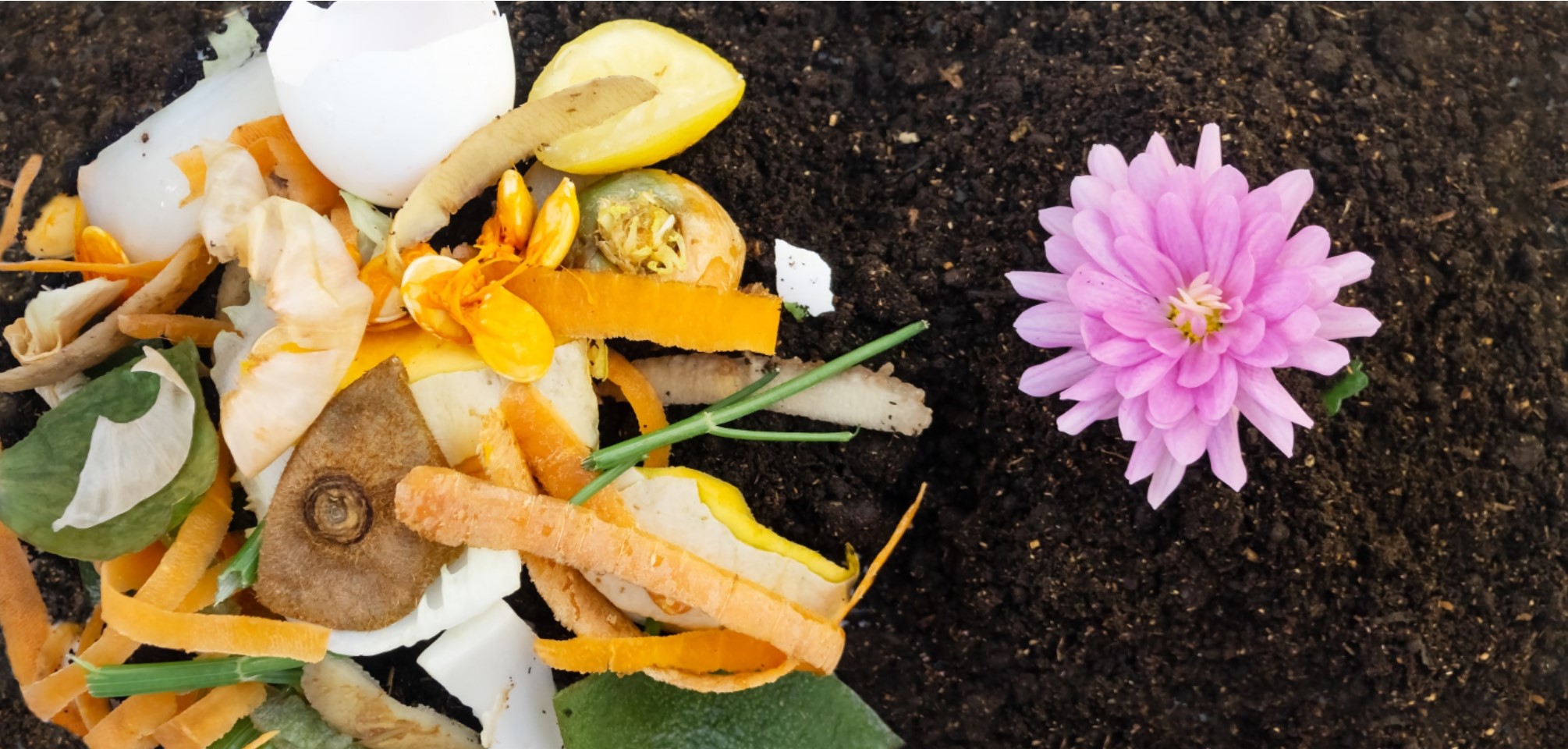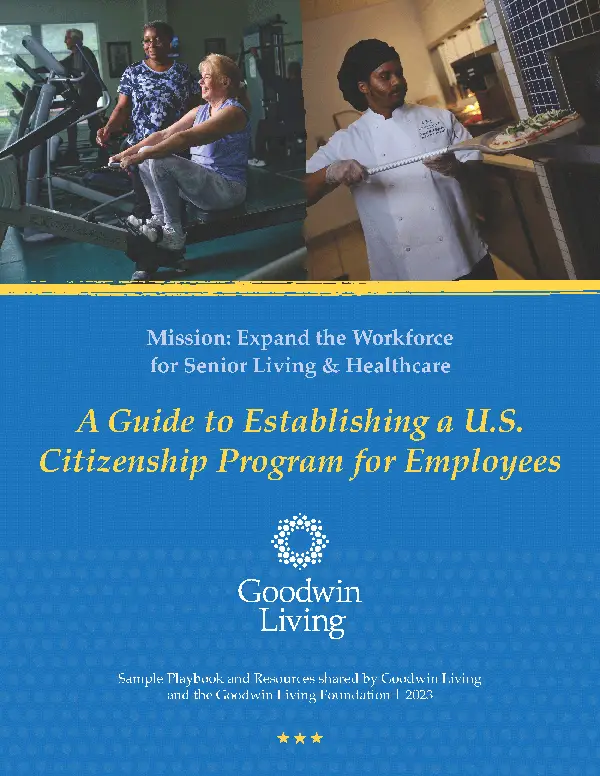
Live with Purpose - July 30, 2020
by Amanda Ranowsky
If you think compost is just extra smelly garbage, think again.
For residents at Goodwin Living Incorporated’s (GHI) two Life Plan Communities (Goodwin House Alexandria and Goodwin House Bailey’s Crossroads), composting is the latest action they are taking to support the environment. Passionate about the environment, they want to leave a better world for future generations.
The “Green Team” at Goodwin House Bailey’s Crossroads, a committee of residents who are committed to supporting a variety of environmental causes, proposed that Goodwin Living explore composting options several years ago. When President & CEO Rob Liebreich, another avid compost practitioner and advocate, joined Goodwin Living a year ago, the idea took off.
In his previous position at a life plan community in Maryland, Rob had worked with Compost Crew, a locally-owned composting business operating out of Rockville, Maryland, that serves residences and businesses throughout D.C., Maryland and Virginia. Rob asked Compost Crew to help residents and GHI start a composting program GHA and GHBC.
Today, Compost Crew comes to GHA and GHBC three times a week to collect the food scraps and other organic materials that have been set aside in specially designated bins. Initially, Dining Services at both GHA and GHBC set up compost collection bins in the main kitchens and dining areas. These areas continue to collect the majority of compostable items from Goodwin Living.
What are the results? From November 2019 through June 2020, both GHA and GHBC together have diverted a total of more than 50,000 pounds of waste from landfills. The savings gained by reducing the amount of trash hauled away has offset the costs of the composting program.
Composting in the communal dining areas was just the beginning for the Green Team at GHBC. They wanted residents – who often prepare their own meals in their apartment kitchens – to be able to compost their organic waste, too.
“We gathered everyone together to show them a video recommended by Compost Crew that explains all about composting,” said Jane McKeel, a leading member of the Green Team and long-time resident of GHBC. “There’s so much great information in that video that we made a flyer to go with it that boils down all of the important facts.”
The Green Team handed out those flyers at several meetings, and set up a display table in the common area on the main floor to help explain the difference between composting and recycling and show residents what types of items they could add to the compost bins.
“There’s a bin in the dining area and another in the art room for residents to bring their compostable waste,” said Ms. McKeel. Why the art room? “Many of the residents like to work with flowers, and they hold flower arranging classes there. They can compost all of the cuttings that would otherwise go in the trash.”
As we’ve learned from residents, when done right composting isn’t any smellier than normal dirt. Composting itself is a fairly simple process that requires three basic ingredients: browns (e.g. dead leaves, twigs or branches), greens (e.g. grass clippings, food scraps or coffee grounds) and water. Composting can be done outdoors in a pile or a bin, or indoors in a specially designed bin. When properly managed, the compost will neither produce strong smells, nor attract rodents or bugs.
According to The Institute for Local Self-Reliance, more than 50% of the garbage typically set out at the curb is compostable. With the United States sending 167 million tons of garbage to landfills and incinerators each year, that’s more than 80 million tons of planet-renewing compost that could be created.
We’re going to get scientific for a minute. Environmental benefits of composting go well beyond saving space in landfills. Food scraps in landfills generate methane – the simplest hydrocarbon and a greenhouse gas that’s incredibly damaging to the environment. Compost generated from those scraps has the potential to offset much of our greenhouse emissions by helping the soil to sequester carbon and reduce the impact of methane emissions.
Carbon sequestration occurs when carbon is removed from the atmosphere and stored in oceans, forests, soils and geologic formations. In soil, carbon is taken in by plants and eventually stored in the soil as decomposing plant and animal tissue or soil minerals. Under the right conditions, it can remain in the soil for millennia. Compost has been shown to significantly contribute to soil’s ability to sequester carbon.
Once compost is processed, it can be mixed back into the soil, where it provides nutrients, aids soil structure, and reduces water runoff. It promotes the bacteria and bugs that make for healthy soil, which in turn keeps plants disease and pest-free. Chemical fertilizers aren’t needed as much when using compost in the soil, because compost already provides more and better nutrients. Gardeners who mix compost into their soil don’t need to use as much – if any – synthetic chemicals and fertilizers to grow strong and plentiful crops.
At Goodwin Living, our current compost collection mostly consists of food scraps, though we’re finding more and more ways to reduce our waste through compost. For example, we’re selecting compostable containers that we can use for to-go and takeaway orders from our dining venues.
Our composting measures became especially critical when communal dining was suspended due to the pandemic. All residents are now served meals that are delivered to their doors in to-go containers. And with our compostable containers and bags being used, we’re able to be more environmentally friendly and less wasteful.
“We look forward to switching to use more compostable products soon,” said Derek Campbell, Executive Chef at GHA. “One of the residents has agreed to spearhead the composting initiative here, and will be able to get started after the pandemic is over.”
There’s an added benefit to partnering with Compost Crew. Twice a year, Compost Crew delivers several bags of compost to each Goodwin Living campus, where they’re used in communal flowerbeds, vegetable gardens and even distributed among residents who want to use some compost for their balcony plants. “The residents love their gardening,” said Chef Derek.
Ms. McKeel voiced the enthusiasm of the residents for the composting initiative at Goodwin Living. “We’re thrilled,” she said. “I’d say the majority of residents here really are interested in supporting sustainability. I’m just so excited that we’re composting.”
As Goodwin Living looks forward to expanding its composting initiative, it’s evident that great strides have already been made. “I’m delighted that our staff and residents have come together to support this environmentally-friendly cause,” said Goodwin Living President & CEO Rob Liebreich. “We look forward to continuing and growing this composting program for many years to come.”
————————————-
As Marketing & Communications Specialist, Amanda Ranowsky partners with colleagues throughout Goodwin Living to tell our stories and raise brand awareness. From printed collateral to digital marketing, Amanda covers many bases. Before joining GHI, Amanda worked for a small, family-owned business where she gained experience in content marketing. Amanda’s creative expression extends beyond the office. She is an active member of community theater and chorus groups.
